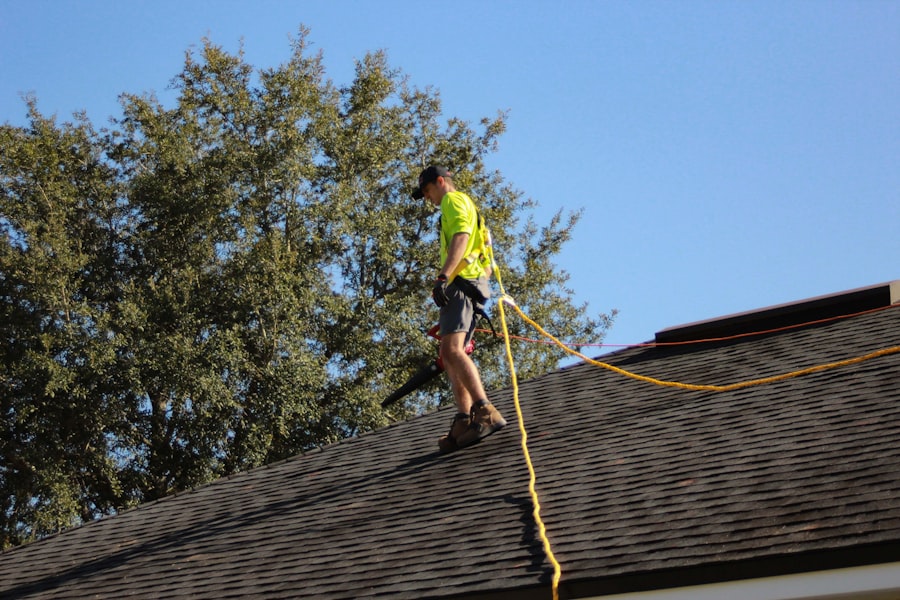Search Engine Optimization (SEO) is a critical component for any business looking to thrive in the digital landscape, and roofing companies are no exception. At its core, SEO involves optimizing a website to improve its visibility on search engines like Google. For roofing businesses, this means ensuring that when potential customers search for roofing services in their area, your company appears prominently in the search results.
The importance of SEO cannot be overstated; studies show that a significant percentage of consumers rely on search engines to find local services, making it essential for roofing companies to invest in effective SEO strategies. To grasp the fundamentals of SEO, roofing businesses must understand key concepts such as keywords, on-page optimization, and user experience. Keywords are the terms and phrases that potential customers use when searching for roofing services.
Identifying the right keywords—such as “roof repair,” “roof installation,” or “local roofing contractor”—is crucial for targeting the right audience. On-page optimization involves adjusting various elements on your website, including title tags, meta descriptions, and header tags, to align with these keywords. Additionally, user experience plays a vital role; a well-structured website that loads quickly and is easy to navigate can significantly enhance your SEO performance.
Key Takeaways
- SEO fundamentals are crucial for roofing businesses to improve online visibility and attract local customers.
- Local SEO tactics, such as optimizing Google My Business and local keywords, enhance roofing company reach in specific areas.
- A well-optimized website with clear service pages and fast loading times boosts roofing service conversions.
- Creating relevant, high-quality content tailored to roofing topics helps establish authority and engage potential clients.
- Regularly tracking SEO performance and adapting to new trends ensures sustained growth and competitiveness in the roofing market.
Implementing Local SEO Strategies for Roofing Companies
Local SEO is particularly important for roofing businesses, as most customers are looking for services within their geographic area. Implementing local SEO strategies involves optimizing your online presence to attract customers from specific locations. One of the most effective ways to enhance local SEO is by creating and optimizing a Google My Business (GMB) profile.
This free tool allows roofing companies to manage their online presence across Google, including search results and maps. By providing accurate information such as your business name, address, phone number, and operating hours, you can improve your chances of appearing in local search results. Another essential aspect of local SEO is acquiring local citations.
These are mentions of your business on other websites, such as local directories or review sites. Ensuring that your business information is consistent across all platforms helps build credibility and trust with search engines. Additionally, gathering positive customer reviews on platforms like Yelp or Angie’s List can enhance your local SEO efforts.
Reviews not only influence potential customers but also signal to search engines that your business is reputable and relevant in your area.
Optimizing Your Website for Roofing Services

Website optimization is a multifaceted process that involves several technical and content-related elements tailored specifically for roofing services. First and foremost, ensuring that your website is mobile-friendly is crucial. With an increasing number of users accessing websites via smartphones and tablets, Google prioritizes mobile-responsive sites in its rankings.
A mobile-friendly design not only improves user experience but also positively impacts your SEO performance. In addition to mobile optimization, the structure of your website plays a significant role in its effectiveness. A well-organized site with clear navigation helps both users and search engines understand the content better.
This includes creating dedicated pages for each service you offer—such as roof repair, installation, and maintenance—along with relevant keywords integrated into the content. Furthermore, optimizing images by using descriptive file names and alt tags can enhance your site’s visibility in image searches, which is particularly beneficial for visually-driven industries like roofing.
Creating Quality Content for Your Roofing Business
| Metric | Description | Recommended Value/Goal | Importance |
|---|---|---|---|
| Content Length | Average word count per blog post or article | 1,200 – 1,500 words | High – Detailed content improves SEO and user engagement |
| Keyword Density | Percentage of target keywords used in content | 1% – 2% | Medium – Helps with search engine ranking without keyword stuffing |
| Originality | Percentage of unique content (plagiarism-free) | 100% | High – Ensures credibility and avoids penalties |
| Readability Score | Flesch-Kincaid Reading Ease score | 60 – 70 (Plain English) | High – Makes content accessible to a wider audience |
| Call to Action (CTA) Presence | Percentage of content pieces with clear CTAs | 100% | High – Drives customer engagement and conversions |
| Visual Content Ratio | Percentage of content including images, infographics, or charts | 30% – 40% | Medium – Enhances user experience and retention |
| Content Update Frequency | How often content is reviewed and updated | Every 6 months | Medium – Keeps information current and relevant |
| Engagement Rate | Average user interaction (comments, shares, likes) | 5% – 10% | High – Indicates content relevance and quality |
Content creation is a cornerstone of effective SEO strategies for roofing businesses. High-quality content not only engages potential customers but also establishes your authority in the industry. One effective approach is to create informative blog posts that address common questions or concerns related to roofing.
Topics could include “How to Choose the Right Roofing Material” or “Signs Your Roof Needs Repair.” By providing valuable information, you position your business as a trusted resource, which can lead to increased traffic and conversions. In addition to blog posts, consider incorporating visual content such as videos or infographics. For instance, a video showcasing a recent roofing project can provide potential customers with insights into your work quality and process.
Infographics summarizing key statistics about roofing maintenance can also be shared on social media platforms, driving traffic back to your website. The more diverse and engaging your content is, the more likely it is to be shared and linked to by others, further enhancing your SEO efforts.
Leveraging Social Media for Local Roofing SEO
Social media platforms offer an excellent opportunity for roofing businesses to enhance their local SEO efforts while engaging with their community. By maintaining an active presence on platforms like Facebook, Instagram, and LinkedIn, you can showcase your work, share customer testimonials, and promote special offers. Engaging with followers through comments and messages fosters a sense of community and builds trust with potential customers.
Moreover, social media can drive traffic to your website, which is a positive signal for search engines. Sharing blog posts or project updates on social media encourages followers to visit your site for more information. Additionally, using location tags in your posts can help attract local customers searching for roofing services in their area.
By integrating social media into your overall marketing strategy, you can create a comprehensive approach that enhances both brand awareness and local SEO.
Building Quality Backlinks for Your Roofing Website

Backlinks—links from other websites pointing to yours—are a critical factor in determining your site’s authority and ranking on search engines. For roofing businesses, building quality backlinks can significantly enhance SEO performance. One effective strategy is to collaborate with local businesses or organizations that complement your services.
For example, partnering with real estate agents or home improvement stores can lead to mutually beneficial backlinks on their websites. Another approach is to create shareable content that naturally attracts backlinks. This could include comprehensive guides on roofing maintenance or infographics that present valuable data about roofing trends.
When other websites find your content useful, they are more likely to link back to it, thereby improving your site’s authority. Additionally, reaching out to industry-related blogs or publications for guest posting opportunities can also help you secure valuable backlinks while expanding your reach within the roofing community.
Monitoring and Analyzing Your Roofing SEO Efforts
Monitoring and analyzing your SEO efforts is essential for understanding what works and what needs improvement. Utilizing tools like Google Analytics allows you to track website traffic, user behavior, and conversion rates effectively. By analyzing this data, you can identify which keywords are driving traffic to your site and which pages are performing well or poorly.
In addition to Google Analytics, tools like Google Search Console provide insights into how your site appears in search results and any issues that may be affecting its performance. Regularly reviewing these metrics enables you to make informed decisions about adjustments needed in your SEO strategy. For instance, if certain keywords are underperforming, you may need to refine your content or optimize those pages further.
Continuous monitoring ensures that you stay ahead of the competition and adapt to changing market dynamics.
Staying Updated with SEO Trends for Roofing Businesses
The world of SEO is constantly evolving, with new trends and algorithm updates emerging regularly. For roofing businesses aiming to maintain a competitive edge, staying informed about these changes is crucial. Following reputable SEO blogs and industry news sources can provide valuable insights into emerging trends such as voice search optimization or the increasing importance of user experience signals.
Additionally, participating in webinars or attending industry conferences can offer opportunities to learn from experts and network with other professionals in the field. Engaging with online communities focused on digital marketing can also provide practical tips and strategies tailored specifically for roofing businesses. By remaining proactive in learning about SEO trends and adapting your strategies accordingly, you can ensure that your roofing company continues to thrive in an ever-changing digital landscape.




